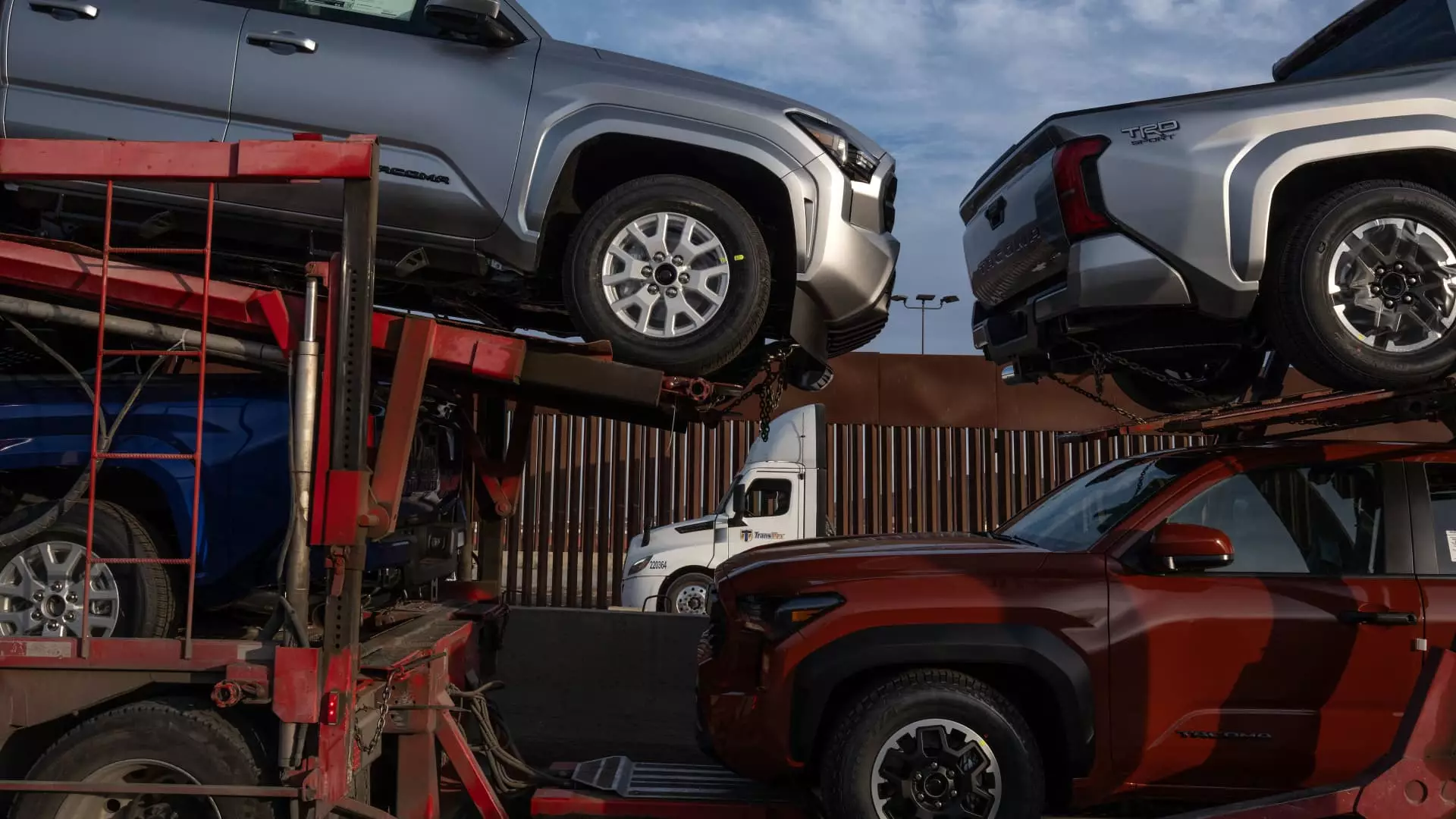The global automotive sector is currently at a crossroads. With President Donald Trump’s consideration to impose hefty tariffs on imports from Canada and Mexico, a significant cloud of uncertainty looms over major automakers, particularly those operating within the United States. This impending policy change could not only shake the foundations of a deeply integrated North American automotive industry but also lead to heightened costs that might ultimately be passed on to consumers.
In anticipation of these tariffs, automotive giants like General Motors, Ford, and Stellantis have adopted a wait-and-see strategy. This approach reflects a broader industry stance that is both cautious and wary. Automakers need clarity regarding governmental policies to strategize effectively for the future. With the threat of tariffs hovering, companies are left scrambling to assess their potential exposure and the implications for their operational costs.
General Motors, as a case study, showcases the palpable tension in the auto industry. Despite reporting earnings that exceeded analyst expectations, the company experienced a sharp drop in stock prices. This paradox highlights the significant degree to which trade policy can influence market perceptions and investor confidence. Analysts like Dan Levy from Barclays have pointed out the stark reality that, regardless of GM’s strong performance or optimistic forecasts, the broader implications of U.S. trade policy are daunting. They underscore that any confusion or unpredictability stemming from tariffs could inhibit strategic planning and operational efficiency.
Tariffs function primarily as taxes on imported goods, and their imposition could significantly alter manufacturing and selling prices in the automotive sector. A proposed 25% tariff on vehicles imported from Canada and Mexico could add approximately $6,250 to the price of an average $25,000 vehicle. For consumers, this could mean increased costs for purchasing new automobiles, which in turn might lead to decreased demand overall.
Automakers tend to operate on slim margins, often relying on cost-effective supply chains that trace back to the very countries where tariffs may be implemented. The intricate network of parts and raw materials sourced from North America means that disruptions to trade policies can have cascading effects throughout the supply chain. This interconnectedness of the industry is evident in how nearly every major player has some manufacturing presence in Mexico, thereby making tariffs a collective concern that prompts more than just individual brand reactions.
The potential economic fallout extends beyond car manufacturers to the larger workforce in the automotive sector. If tariffs lead to price increases that result in reduced consumer demand, companies may grapple with the difficult decision of scaling back production. Scaling back could subsequently lead to layoffs and economic instability within communities that heavily rely on automotive jobs.
Financial assessments from leading analysts show that the tariff impact could amount to tens of billions of dollars across the industry. For instance, estimates suggest that a 25% import tax could collectively cost the traditional Big Three automakers—General Motors, Ford, and Stellantis—upward of $56 billion. Such figures paint a stark picture of the potential financial strain that tariffs could inflict not only on companies’ profitability but also on their long-term viability.
In light of this uncertainty, automotive executives are expressing their need for a well-thought-out response plan. Antonio Filosa of Stellantis indicated the necessity of preparing various scenarios but emphasized that concrete actions would only crystallize once there is a definitive governmental decision on trade policies. The call for proactive strategies underscores a growing recognition of the need for agility in navigating the complexities of trade relations.
Additionally, not all automakers are equally exposed to the risks posed by tariffs. Companies like Volkswagen and Nissan face greater exposure due to a higher percentage of their sales being derived from vehicles produced in Mexico. This split indicates a need for strategic foresight tailored to each company’s unique operational footprint and risk profile.
Ultimately, the path forward for the automotive industry hinges on the stabilization of trade policies that provide clarity and direction. As the industry stands poised to react, it is evident that the intricate interplay between governmental policy and corporate strategy will determine not only the economic health of automotive giants but also the broader economic landscape in the United States.
With several moving parts and significant implications for stakeholders, the automotive sector remains a focal point for discussion among policymakers. The time has come for a collaborative approach that acknowledges the importance of international trade while safeguarding the interests of domestic industries. As the situation unfolds, stakeholders will keenly monitor developments, anticipating both challenges and opportunities in what could very well redefine the future of North American automotive manufacturing.

